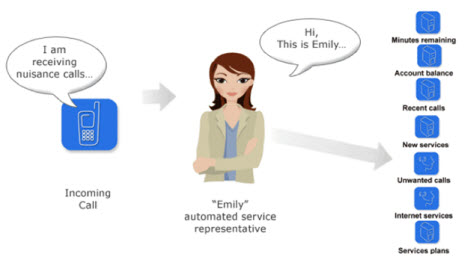 Businesses offer a wide variety of communicative options (live chat, email, fax, etc.) to customers. While these modes allow for more extensive customer service and support, as well as improve upon flexibility and increase overall efficiency, many of them reduce the human touch of personality. Its crucial that businesses utilize communications that enable efficiency as well account for personability. This is where Automated Receptionists come into play.
Businesses offer a wide variety of communicative options (live chat, email, fax, etc.) to customers. While these modes allow for more extensive customer service and support, as well as improve upon flexibility and increase overall efficiency, many of them reduce the human touch of personality. Its crucial that businesses utilize communications that enable efficiency as well account for personability. This is where Automated Receptionists come into play.
A little bit of personalization can go a long way. Nowadays, businesses offer a wide variety of communicative options (live chat, email, fax, etc.) to customers. While these modes allow for more extensive customer service and support, as well as improve upon flexibility and increase overall efficiency, many of them reduce the human touch of personality. That being said, its crucial that businesses utilize communications that enable efficiency as well account for personability. This is where Automated Receptionists come into play.
Automated Receptionists, or Auto Attendants (AAs), work just like a staffed receptionist would; however, instead of using a live staff member, greetings and call routing are deployed automatically based on a menu. Simply put, users program menus that deploy a variety of call management features including call forwarding and routing, voicemail, music on hold, and much more. Therefore, when a customer calls, they are met with a prerecorded message/greeting followed by a menu of options that forwards calls to departments, users, etc. As such, callers can reach the desired contact by following the menu commands—for example, “for accounting, press 3.” In working this way, digital receptionists are able to more efficiently handle calls as well as handle staff. While this is beneficial for businesses, how do these systems affect callers?
In short, these receptionists can prove both helpful and harmful; it ultimately depends on the implementation. Generally, the more simple the menu with AAs, the better off you are. For example, with a quick greeting and a simple menu (with a clear and basic directory), callers are able to reach their desired party quickly and with less middlemen. As a result, customer service can be more effective and time efficient. Additionally, a simple menu allows for easier navigation. By offering clear and simple user commands, callers are able to move around their system more effectively and comfortably, which again allows for quicker, more accurate connections. Separate from this, AAs can also be used to simplify user functions. Some businesses allow users to pay bills, access account information, etc. over the phone. Auto Attendant menus can offer this quickly and directly by simply assigning it a place within the menu’s directory. While simplicity can be useful, too much can be detrimental.
Oversimplification and a lack of specificity can lead to an overwhelming feeling of impressionability. As stated above, users want to feel valued, as if they are receiving the utmost attention from a business. As such, overly simplistic and basic menus can lead callers to feel as if they’re needs are not being provided for. Sure, directory menus can lead users to the right department/representative, but this could be time consuming—i.e there’s a chance that the users’ may be transferred incorrectly, or otherwise addressed inappropriately.
Auto Attendants have a lot of potential to account for personalization with callers. Businesses are able to set up their menu and greeting however they so desire. As such, businesses are able to decide how to best account for their customers’ needs. Typically, the most effective way to deploy AAs is with live representative support (I.e. “press 0 to connect with an operator). With this, users feel they have options to get their individual needs met much quickly and directly; however, users can also implement extension calling, departmental assistance, etc. Automated Receptionists have the ability to both augment and undercut personability with callers. On one hand, they definitely help in allowing businesses systems to run more smoothly and efficiently;
however, on the other hand, they lack the personality live receptionists can provide. That being said, it’s ultimately up to the business to find the right balance.
by: Michael Ventimiglia, Editor and VoIP Enthusiast at GetVoIP.com – a guide for VoIP Provider Comparison, and Consumer Reviews.


